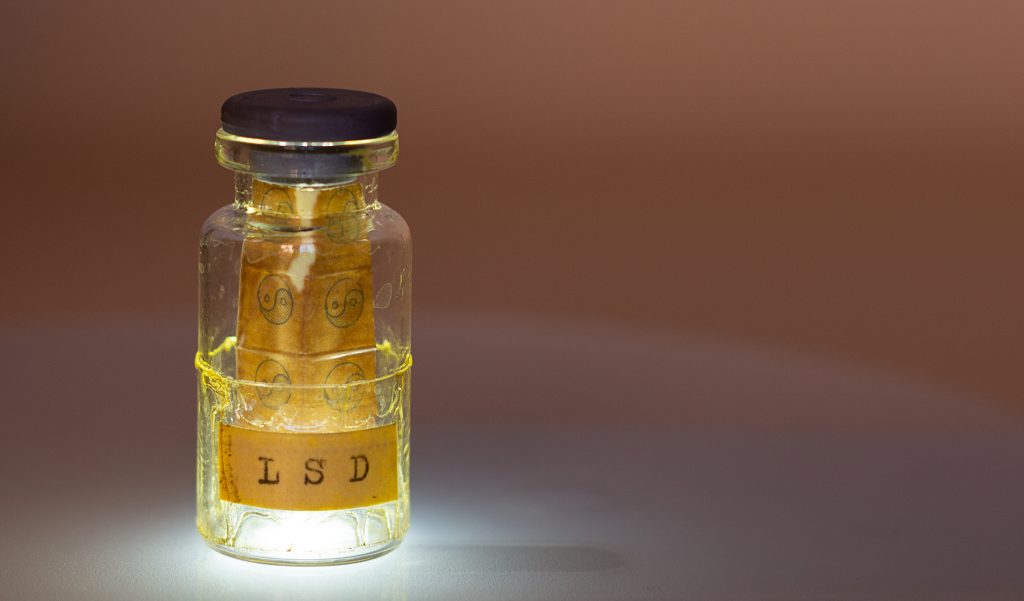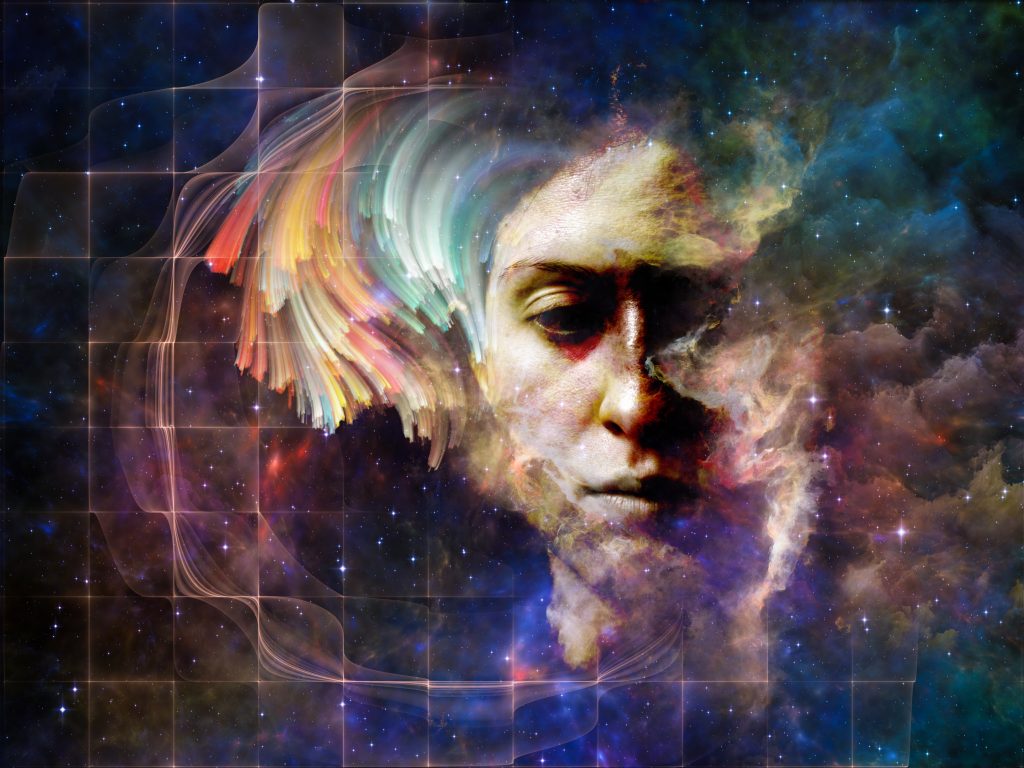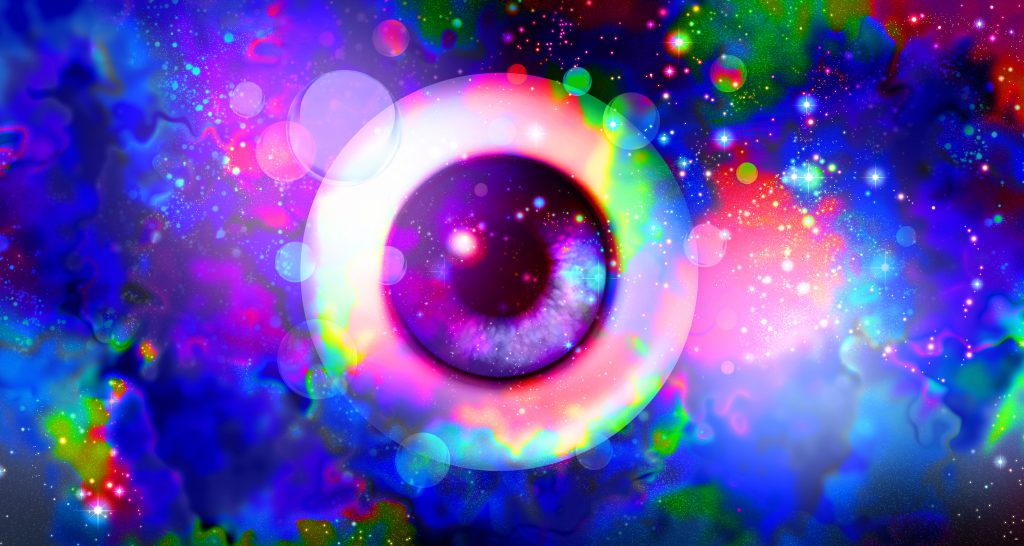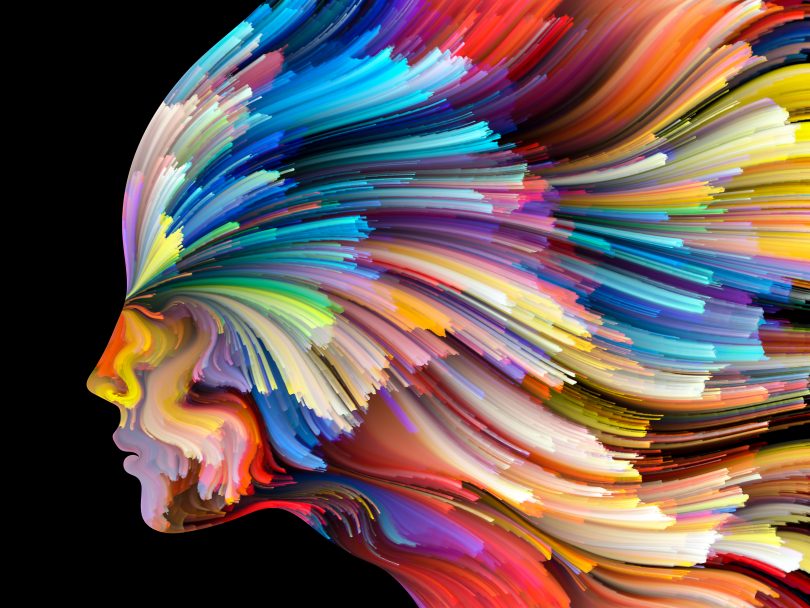As psychedelics become more popular, with more being spoken about their medical properties, the question of hallucinations arises. After all, psychedelics are widely known for causing them. So, what are these hallucinations, and what happens in your brain when you take these drugs that makes you hallucinate?
The brain is a vast and hard-to-understand organ, and what happens in it when we hallucinate is not well understood. But research is coming out everyday to help us understand better how the drugs we take, effect our brains. We’re dedicated to covering this emerging field of psychedelics! For more articles like this one, sign up to our Weekly Newsletter, your #1 internet source for everything important going on in this quickly growing space.
What are psychedelic drugs?
Psychedelic drugs are members of a group called hallucinogens, which fit under the category of psychoactive drugs. Psychedelics are associated with causing hallucinations, which are essentially the sensation of something that doesn’t actually exist. This can mean smelling something, seeing something, hearing something, feeling something, or tasting something that isn’t there.
Apart from hallucinations, psychedelics are known for causing users to have spiritual experiences, to feel more connected to those around and the universe as a whole, to bring on feelings of euphoria and wellbeing, to alter perception, cognition, and mood, and to promote what people refer to as ‘life-changing’ experiences.
While these occurrences are generally positive, psychedelics are also associated with ‘bad trips’; in which a user experiences negative hallucinations. Sometimes along with symptoms like erratic heartrate, chills, anxiety, paranoia, nausea, raised blood pressure, and dizziness. Bad trips are more often than not associated with taking too much of a drug, as well as being in bad surroundings or around the wrong people for the situation. Plenty can be done to avoid bad trips when taking these drugs.
Many different types of psychedelic drugs exist, and they can be found in nature or created in a lab. Nature-based psychedelics include peyote, psilocybin (magic mushrooms), and DMT, whereas lab made psychedelics include drugs like LSD, ketamine, and PCP. As of right now, according to the federal government, all psychedelic compounds are schedule I. This excludes ketamine, which is Schedule III, and able to be prescribed for off-label use as an antidepressant or pain medication, esketamine – a cousin to ketamine which enjoys FDA approval for depression, and DXM, which has been found in OTC cold medicines since 1958.

While the federal government holds these drugs illegal, individual states and locations like Detroit, have made their own rules, decriminalizing these compounds for recreational use, or in the case of Oregon, legalizing them for medical use. These law changes are generally related to entheogenic plants (naturally occurring psychedelics) more than their lab-created counterparts.
Who gets hallucinations?
When we talk about hallucinations, we’re not necessarily talking about drug use, or even psychedelic drug use. So before getting to what happens in the brain when we hallucinate, first let’s examine who tends to have this happen. Hallucinations can happen for different reasons outside of drug use. One of the big factors for hallucinations is medical issues, particularly neural issues like schizophrenia, Parkinson’s, or epilepsy, all of which can cause hallucinations at given times.
Schizophrenics, for example, experience hallucinations frequently, with as many as 70% reporting such occurrences. 60-90% of these say they hear voices. When it comes to Parkinson’s disease, about half of patients report seeing things at times that aren’t there. Alzheimer’s is another disorder that can come with hallucinations, generally in the more advanced cases.
Brain tumors are another reason for people to experience hallucinations. Not all brain tumors will, and the kind of hallucinations are based on where the tumor is, and what kind of a tumor it is. Some will cause visions, while others might cause the person to smell or taste something that’s not there. Epileptics similarly can experience hallucinations depending on where the seizures they have, effect their brains.
Visual hallucinations can be experienced by those suffering from eye issues like macular degeneration, glaucoma, or cataracts. Called Charles Bonnet syndrome, it can actually be hard for those suffering the ailment to know when what they’re seeing is real or not. Even people who get migraines have experiences akin to hallucinating, though possibly in a different way. About a third of migraine sufferers have what’s called an ‘aura’, which can look like a crescent of light, sometimes multi-colored, sometimes flickering in the periphery.
What happens in the brain when we hallucinate?
According to the 2014 systematic review Pharmacology of Hallucinations: Several Mechanisms for One Single Symptom?, “Hallucinations are complex misperceptions, that principally occur in schizophrenia or after intoxication induced by three main classes of drugs: psychostimulants, psychedelics, and dissociative anesthetics.”
The study authors continue that there are three things that can happen in the brain when taking drugs to make us hallucinate: “(1) activation of dopamine D2 receptors (D2Rs) with psychostimulants, (2) activation of serotonin 5HT2A receptors (HT2ARs) with psychedelics, and (3) blockage of glutamate NMDA receptors (NMDARs) with dissociative anesthetics.” The authors further explain this:
“Psychostimulants-induced hallucinations result from increased dopamine transmission and hyperactivation of dopamine D2 receptor (D2R). Furthermore, “dissociative anesthetics” drugs induce complex schizophrenia-like clinical pictures, including hallucinations, that result from the blockade of glutamate NMDA receptors (NMDAR). Lastly, psychedelics act by stimulating the serotoninergic 5HT2A receptor (5HT2AR)”. Their review suggests:

“That if there may be common neurobiological pathways between the different pharmacological systems that are responsible for the hallucinations, there may also be unique properties of each system, which explains the clinical differences observed.”
The authors explained the three main models for hallucination.
- The Dopamine Model, which relates mainly to schizophrenia. In this model, “the hypothesis that positive symptoms may be related to an excessive transmission of dopamine has become the main pharmacological model of positive symptoms in schizophrenia.” These cases are nearly always auditory.
- The Glutamate Model, which relates mainly to dissociative anesthetics and schizophrenia. In this model, the role of NMDARs (a receptor) is looked at in both schizophrenic and dissociative-anesthetic induced hallucinations. “Currently, NMDAR hypofunction is considered by several leading researchers of the field to be a major neurobiological hypothesis for schizophrenia.”
- The Serotonin Model, which relates mainly to psychedelic drugs and schizophrenia. While there is certainly debate about what causes the hallucinations, one of the main beliefs is about the “stimulation of serotonin 5HT2AR on cortical neurons.” The authors explain, “Cortical 5HT2AR hyperactivation may affect the functioning of the cortico-striato-thalamo-cortical loops and triggers a disruption in the thalamic gating of sensory and cognitive information. It has been proposed that this process triggers a breakdown of cognitive integrity and results in the subsequent occurrence of aberrant feelings and perceptions.”
More research on the brain when we hallucinate
In the 2009 publication On the neurobiology of hallucinations, author Patricia Boksa, PhD points out that hallucinations can be had by those without neural problems, pointing out how in times of grief or due to sensory deprivation, hallucinations are sometimes experienced. She went on to say that “it is unknown at present whether hallucinations are generated by similar mechanisms in patients and in healthy people.”
Boksa goes on to explain how patients with brain lesions who had hallucinations were studied, and that the hallucinations present were relevant to where the damage was. “For example, the complex visual hallucinations seen in Charles Bonnet syndrome are most often caused by damage to the visual system such as macular degeneration or lesions to the central nervous system pathway between the eye and the visual cortex.”
When it comes to schizophrenia, Boksa referenced a comprehensive review on neuroimaging related to what happens to the brain when people hallucinate. “The most consistent finding of structural neuroimaging studies of patients with auditory hallucinations is reduced grey matter volume in the superior temporal gyrus, including the primary auditory cortex.”
She also referenced another study which made the point that “faulty frontotemporal interactions may contribute to the experience of hallucinations being involuntary”, and that “Functional activation studies of actively hallucinating participants have generally reported increased activity in language areas and in the primary auditory cortex.”

In a 2016 article for ABC News, University of Western Australia, neuropsychologist Professor Flavie Waters, posited that hallucinations are the result of something going wrong between the frontal lobe and sensory cortex, also pointing to auditory hallucinations of schizophrenics having to do with an overactive auditory cortex.
In Parkinson’s patients, overactivity is often seen in the visual cortex, which leads to mainly visual hallucinations. Professor Waters went on to apply all this to psychoactive drugs, saying it’s quite possible that some drugs can mess with how sense processors and the frontal lobe interact, in a similar way, saying “It allows the processing of images and sound that would normally be inhibited.”
One last idea
An important thing to consider, is the idea of how we interpret the world around. In a 2019 study A Hallucinogenic Serotonin-2A Receptor Agonist Reduces Visual Response Gain and Alters Temporal Dynamics in Mouse V1, researchers found that after being given a hallucinogen, that hallucinating mice had a reduction in activity in the brain’s vision center, suggesting “hallucinations happen when the brain overcompensates for a lack of information coming from the outside world.” Said study researcher Cristopher Niell of the University of Oregon in Eugene, “If you’re putting less weight on what’s going on around you but then over-interpreting it, that could lead to hallucinations.”
For the study, scientists used a compound called DOI (4-iodo-2,5-dimethoxyphenylisopropylamine), which is a serotonergic hallucinogen drug. Then they showed the mice pictures, while looking at their brains. They found that the drug lessened incoming visual information, with the implication that hallucinations come from misinterpreting the diminished information coming in from the world around.
Said Niell of the finding, “You might expect visual hallucinations would result from neurons in the brain firing like crazy, or by mismatched signals… We were surprised to find that a hallucinogenic drug instead led to a reduction of activity in the visual cortex.” While the brain attempting to fill in blanks does sound like it makes sense, Niell stated,
“I don’t feel like we’ve necessarily found the smoking gun for the entire underlying cause of hallucinations, but this is likely to be a piece of it.”
Conclusion
The brain is a powerful and intricate piece of human machinery, and for as much as we know about it, there are tons of questions still unanswered. What happens in the brain when we hallucinate is one of them, although a growing body of research is doing more and more to shed light on this highly confusing and intriguing topic.







